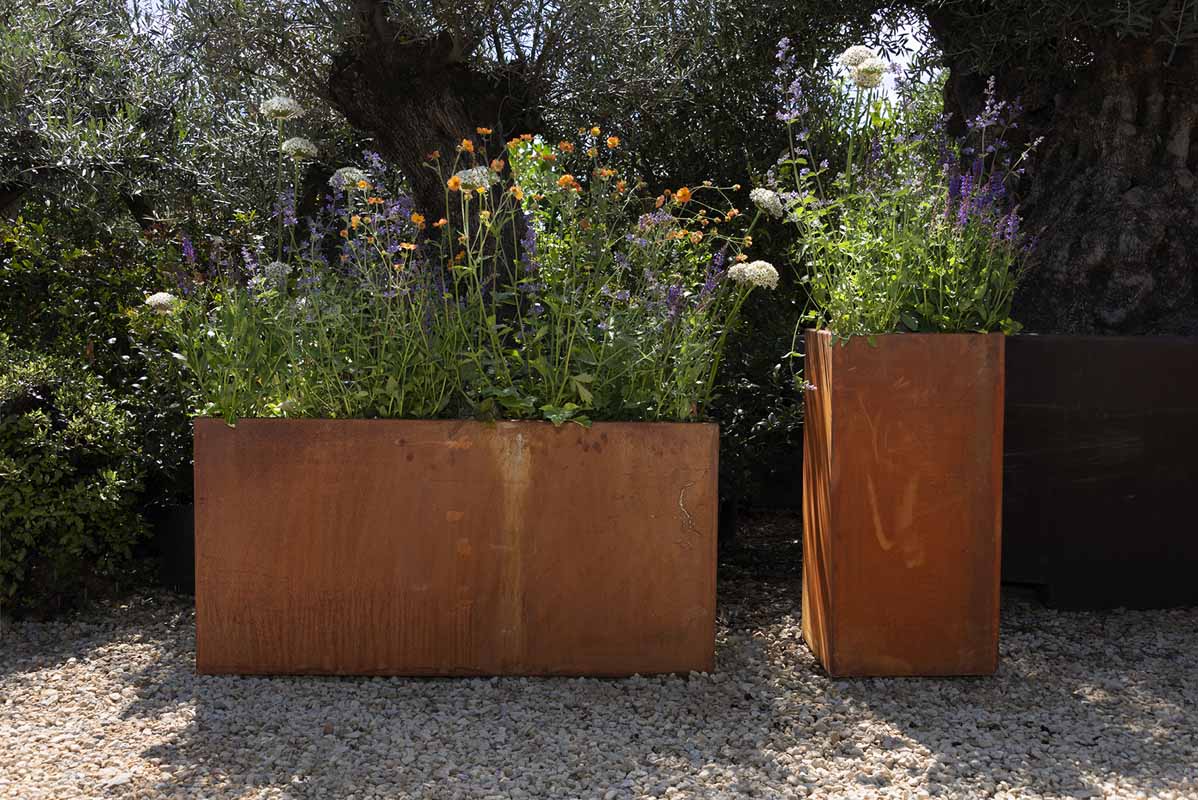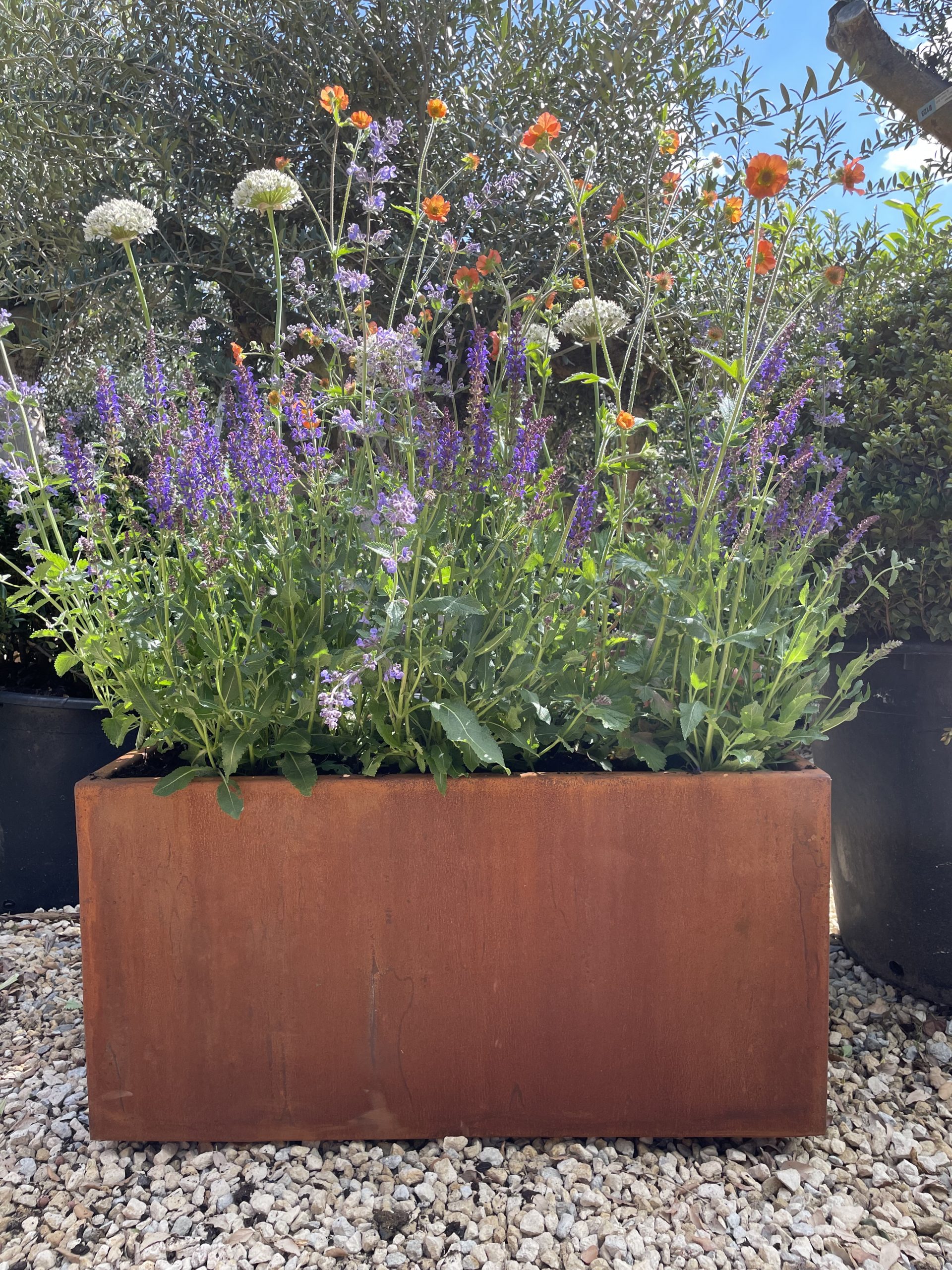Welcome to my first ever blog for London Stone! I am really excited to be writing a new monthly blog for London Stone, and I hope that you enjoy reading it as much as I enjoyed writing it.
With the festivities of Christmas now becoming a distant memory as we head back to work, January can seem such a long, dull and dreary month. Often too cold to garden, the days are too short and generally miserable. Not ideal for us gardeners.
It may appear that the garden is dormant, deprived of flora and life, fast asleep and waiting to spring into action until March. However, if you look carefully, you will see the first signs that the woodland is awakening, with a stretch and a yawn. The witch hazels are beginning to unfurl from above, snowdrops springing to life from below. Everywhere you look is a reminder that the new growing season is upon us.
Below are a selection of my favourite January flowering plants; a must have for any woodland garden, and the plant ‘fix’ us horticultural junkies need to see us through to spring. Helleborus foetidus – AKA, the stinking Hellebore, boasting elegant green cupped flowers tinged with elegant purple. Please don’t let the name put you off, the common name comes from the smell released by crushing the leaves, and doesn’t do justice to its incredibly beautiful, nodding flowers.
Helleborus foetidus – AKA, the stinking Hellebore, boasting elegant green cupped flowers tinged with elegant purple. Please don’t let the name put you off, the common name comes from the smell released by crushing the leaves, and doesn’t do justice to its incredibly beautiful, nodding flowers.
Reliably one of the first perennials to start flowering, so if you’re an impatient gardener, as I am, then this is a great one for you. The sophisticated green is truly striking against the mulched woodland floor. Being a true woodlander, this thrives in a cool soil rich in organic matter, with plenty of dappled shade. Keep the seed heads on after they have finished flowering, to allow the plant to self-seed. Everyone loves plants for free! Daphne bholua ‘Alba’ – An incredible, elegant and classy Daphne, one of those plants you smell before you see, and really is such a glamorous plant. Highly sought after, as with most Daphnes, the demand is justified when you catch a whiff of the heavenly scent.
Daphne bholua ‘Alba’ – An incredible, elegant and classy Daphne, one of those plants you smell before you see, and really is such a glamorous plant. Highly sought after, as with most Daphnes, the demand is justified when you catch a whiff of the heavenly scent.
The pure white flowers are formed in miniature clusters, the flowers not being much bigger than Smarties, which makes the abundance of scent produced even more incredible. A smaller growing shrub, growing-up to a maximum height of around 2 metres tall, making it a lovely option for small-to-medium sized gardens.
Hamamelis x intermedia ‘Harry’ – I simply adore Witch-hazels. They are always the first of the woodland shrubs to spring into life in the New Year, and really put on a show. It is always a delight to be reminded just how fabulous they are; spending most of the year as unassuming shrubs, only in the depths of winter do they sparkle. No woodland garden is complete without one.
Harry is a wonderful orange Hamamelis, with orange peel like flowers that start off a dark red at the centre fading to a softer orange as they unfurl out. Producing an incredible scent, the smell produced by a large specimen is incredible.
Harry likes a moist ground with plenty of dappled shade, and would be very grateful for lots of organic matter, especially during the summer months to help retain moisture in the ground. Other than this, they are very easy to look after, and most definitely worth growing. Reaching around 3 metres in height, this is perfect if you need a larger shrub for a larger garden. Hamamelis intermedia ‘Vesna’ – Another fantastic Witch-hazel, larger than ‘Harry’, growing to 4 metres this is closer to a tree than a large shrub. Producing spidery flowers that are immensely fragrant and a real treat for the nostrils. The fiery orange petals glow in the grey January sky, and when mature, produces an incredible display that illuminates the woodland.
Hamamelis intermedia ‘Vesna’ – Another fantastic Witch-hazel, larger than ‘Harry’, growing to 4 metres this is closer to a tree than a large shrub. Producing spidery flowers that are immensely fragrant and a real treat for the nostrils. The fiery orange petals glow in the grey January sky, and when mature, produces an incredible display that illuminates the woodland.
Hamamelis x intermedia ‘Pallida’ – A more commonly grown Hamamelis, it’s easy to see why it is so popular with its impressive primrose flowers that soften the woodland, and offer a calmer colour than the previous two witch hazels above.
A more spreading cultivar too, growing up to 4 metres wide, in layers that make it stand-out and reach-out onto neighbouring planting, making it a great space filler, and ideal if you want to give a Hamamelis a go for the first time.
Jamie Butterworth - Horticultural Consultant
jamiebutterworth@londonstone.co.uk


/filters:quality(60)/mediadev/media/menu-pics/all-porcelain.jpg )
/filters:quality(60)/mediadev/media/menu-pics/luxury-italian.jpg )
/filters:quality(60)/mediadev/media/menu-pics/premium-italian.jpg )
/filters:quality(60)/mediadev/media/menu-pics/budget-porcelain.jpg )
/filters:quality(60)/mediadev/media/menu-pics/large-format-porcelain.jpg )
/filters:quality(60)/mediadev/media/menu-pics/wood-effect-porcelain.jpg )
/filters:quality(60)/mediadev/media/menu-pics/porcelain-planks.jpg )
/filters:quality(60)/mediadev/media/menu-pics/porcelain-setts.jpg )
/filters:quality(60)/mediadev/media/menu-pics/browse-all-paving.jpg )
/filters:quality(60)/mediadev/media/menu-pics/stone-paving.jpg )
/filters:quality(60)/mediadev/media/menu-pics/interior-tiles.jpg )
/filters:quality(60)/mediadev/media/menu-pics/stone-effect-porcelain.png )
/filters:quality(60)/mediadev/media/menu-pics/wood-effect-porcelain.png )
/filters:quality(60)/mediadev/media/menu-pics/grey-porcelain.png )
/filters:quality(60)/mediadev/media/menu-pics/beige-porcelain.png )
/filters:quality(60)/mediadev/media/menu-pics/dark-porcelain.png )
/filters:quality(60)/mediadev/media/menu-pics/light-porcelain.png )
/filters:quality(60)/mediadev/media/menu-pics/patio-grout.jpg)
/filters:quality(60)/mediadev/media/menu-pics/primers.jpg)
/filters:quality(60)/mediadev/media/menu-pics/porcelain-blades.jpg)
/filters:quality(90)/mediadev/media/menu-pics/drainage.jpg)
/filters:quality(60)/mediadev/media/menu-pics/cleaners.jpg)
/filters:quality(60)/mediadev/media/menu-pics/all-stone-paving.jpg )
/filters:quality(60)/mediadev/media/menu-pics/all-sawn-paving.jpg )
/filters:quality(60)/mediadev/media/menu-pics/all-riven-paving.jpg )
/filters:quality(60)/mediadev/media/menu-pics/indian-sandstone.jpg )
/filters:quality(60)/mediadev/media/menu-pics/limestone-paving.jpg )
/filters:quality(60)/mediadev/media/menu-pics/granite-paving.jpg )
/filters:quality(60)/mediadev/media/menu-pics/slate-paving.jpg )
/filters:quality(60)/mediadev/media/menu-pics/yorkstone-paving.jpg )
/filters:quality(60)/mediadev/media/menu-pics/stone-pavers.jpg )
/filters:quality(60)/mediadev/media/menu-pics/cobbles-setts.jpg )
/filters:quality(60)/mediadev/media/menu-pics/plank-paving.jpg )
/filters:quality(60)/mediadev/media/menu-pics/paving-circles.jpg )
/filters:quality(60)/mediadev/media/menu-pics/bespoke-paving-1.jpg )
/filters:quality(60)/mediadev/media/menu-pics/edging-stones-1.jpg )
/filters:quality(60)/mediadev/media/menu-pics/prestige-stone.jpg )
/filters:quality(60)/mediadev/media/menu-pics/grey-blue-stone.png)
/filters:quality(60)/mediadev/media/menu-pics/swatch-black-dark.jpg )
/filters:quality(60)/mediadev/media/menu-pics/swatch-buff-beige-white.jpg )
/filters:quality(60)/mediadev/media/menu-pics/sealants.jpg)
/filters:quality(60)/mediadev/media/menu-pics/all-clay-paving.jpg )
/filters:quality(60)/mediadev/media/menu-pics/alpha-clay-pavers.jpg )
/filters:quality(60)/mediadev/media/menu-pics/cottage-garden-clay-pavers.jpg )
/filters:quality(60)/mediadev/media/menu-pics/kessel-garden-clay-pavers.jpg )
/filters:quality(60)/mediadev/media/menu-pics/artisan-clay-pavers.jpg )
/filters:quality(60)/mediadev/media/menu-pics/grey-blue-clay-paver.png )
/filters:quality(60)/mediadev/media/menu-pics/red-brown-clay-pavers.png )
/filters:quality(60)/mediadev/media/menu-pics/beige-buff-clay-pavers.png )
/filters:quality(60)/mediadev/media/menu-pics/composite-decking.jpg )
/filters:quality(60)/mediadev/media/menu-pics/designboard-decking.jpg )
/filters:quality(60)/mediadev/media/menu-pics/classic-designboard.jpg )
/filters:quality(60)/mediadev/media/menu-pics/brushed-designboard.jpg )
/filters:quality(60)/mediadev/media/menu-pics/grooved-designboard.jpg )
/filters:quality(60)/mediadev/media/menu-pics/millboard-decking.jpg )
/filters:quality(60)/mediadev/media/menu-pics/grey-decking.jpg )
/filters:quality(60)/mediadev/media/menu-pics/black-charcoal-decking.jpg)
/filters:quality(60)/mediadev/media/menu-pics/brown-decking.jpg)
/filters:quality(60)/mediadev/media/menu-pics/all-build-deck.png )
/filters:quality(60)/mediadev/media/menu-pics/stone-cladding.jpg )
/filters:quality(60)/mediadev/media/menu-pics/all-garden-walling-1.jpg )
/filters:quality(60)/mediadev/media/menu-pics/facing-bricks.jpg )
/filters:quality(60)/mediadev/media/menu-pics/garden-screening.jpg )
/filters:quality(60)/mediadev/media/menu-pics/all-steps-coping.jpg )
/filters:quality(60)/mediadev/media/menu-pics/stone-garden-steps.jpg )
/filters:quality(60)/mediadev/media/menu-pics/sawn-steps.jpg )
/filters:quality(60)/mediadev/media/menu-pics/riven-steps.jpg )
/filters:quality(60)/mediadev/media/menu-pics/yorkstone-steps.jpg )
/filters:quality(60)/mediadev/media/menu-pics/bespoke-steps.jpg )
/filters:quality(60)/mediadev/media/menu-pics/porcelain-steps.jpg )
/filters:quality(60)/mediadev/media/menu-pics/off-the-shelf.jpg )
/filters:quality(60)/mediadev/media/menu-pics/stone-coping.jpg )
/filters:quality(60)/mediadev/media/menu-pics/sawn-coping.jpg )
/filters:quality(60)/mediadev/media/menu-pics/riven-coping.jpg )
/filters:quality(60)/mediadev/media/menu-pics/yorkstone-coping.jpg )
/filters:quality(60)/mediadev/media/menu-pics/bespoke-coping.jpg )
/filters:quality(60)/mediadev/media/menu-pics/stone-pier-caps.jpg )
/filters:quality(60)/mediadev/media/menu-pics/porcelain-coping.jpg )
/filters:quality(60)/mediadev/media/menu-pics/all-bespoke-services.jpg )
/filters:quality(60)/mediadev/media/menu-pics/bespoke-paving-2.jpg )
/filters:quality(60)/mediadev/media/menu-pics/bespoke-steps-1.jpg )
/filters:quality(60)/mediadev/media/menu-pics/bespoke-coping-1.jpg )
/filters:quality(60)/mediadev/media/menu-pics/edge-profiles.jpg )
/filters:quality(60)/mediadev/media/menu-pics/masonry-services.jpg )
/filters:quality(60)/mediadev/media/menu-pics/deluxe-pergolas.jpg )
/filters:quality(60)/mediadev/media/menu-pics/proteus-pergolas.jpg )




